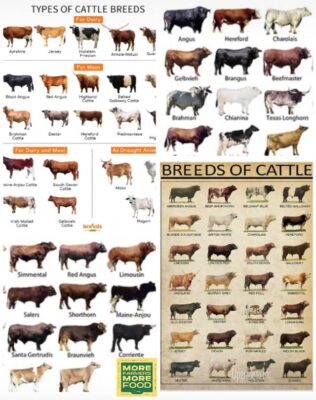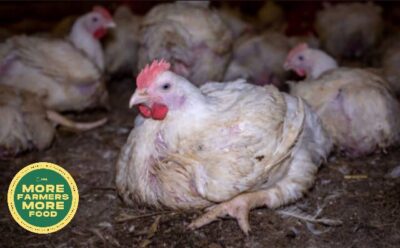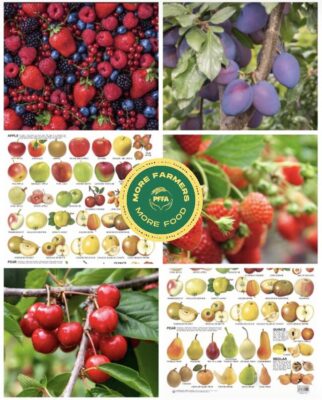Raising Goats
In this Article...
A Comprehensive Guide to Successful Goat Keeping
Keeping goats can be an incredibly rewarding and fulfilling experience. Whether you have a small back garden or a large rural property, goats offer a range of benefits, from providing fresh milk and meat to acting as natural weed control. In this blog, we will delve into the world of goat keeping, exploring the reasons to keep goats, different breeds to consider, housing options, feed choices, common health concerns, costs involved, raising kids, and top tips for success.
Why Keep Goats?
Dairy Products: One of the primary reasons people keep goats is for their milk. Goat’s milk is highly nutritious and can be used to make various dairy products like cheese, yoghurt, and butter. It is also easier to digest than cow’s milk for many individuals.
Meat Production: Goats can be raised for meat, providing a lean and flavorful alternative to beef or pork. Goat meat, known as chevon, is popular in many cuisines around the world.
Land Management: Goats are excellent at clearing unwanted vegetation. Their browsing behaviour helps control weeds and brush, making them valuable for land management and brush control.
Different Goat Breeds:
British Alpine: The British Alpine is a medium to large-sized goat breed known for its excellent milk production. They have a docile temperament and can adapt well to various climates, including the UK. British Alpines are a popular choice for both commercial dairy operations and small-scale homesteads.
Toggenburg: Toggenburg goats are a medium-sized breed with a distinctive brown or chocolate-coloured coat and white markings. They are known for their hardiness and adaptability to various climates. Toggenburgs have good milk production, and their milk is prized for its sweet flavour. They are also known for their longevity and ability to thrive on a forage-based diet.
British Guernsey: The British Guernsey breed is a smaller-sized goat known for its high-quality milk production. They have a gentle temperament and are easy to handle, making them suitable for smallholdings or backyard settings. Their milk has a rich and creamy texture, making it ideal for cheese and yoghurt production.
Golden Guernsey: The Golden Guernsey breed is a rare and attractive breed known for its golden-coloured coat. They are medium-sized goats and have a friendly and sociable nature. Golden Guernseys are versatile, as they can be raised for both milk and meat production. They are well-adapted to the UK’s climate and are considered a heritage breed.
Anglo-Nubian: The Anglo-Nubian breed is a popular choice for those interested in dual-purpose goats. They are large-sized goats with long, drooping ears and a distinctive Roman nose. Anglo-Nubians are known for their high milk production, as well as their flavorful meat. They have a friendly and curious temperament, although they can be a bit more challenging to manage due to their strong-willed nature.
Housing Options:
Pasture-Based Systems: Allowing goats access to pasture is ideal, as it provides them with fresh forage and space for exercise. Ensure that the pasture is securely fenced and free from toxic plants. However, pasture alone may not be sufficient during extreme weather conditions or if there is a need for close supervision, especially during kidding season.
Shelters: Constructing a shelter is crucial to provide goats with protection from adverse weather conditions, such as heavy rain, snow, or strong winds. Ensure the shelter is well-ventilated to prevent the buildup of moisture and ammonia from urine. Bedding with straw or wood shavings can provide additional insulation and comfort.
Barns: Barns offer a more substantial housing option, particularly for larger herds or when additional space is required for kidding, milking, or storing equipment and feed. Adequate ventilation, lighting, and proper drainage are important considerations when constructing or converting a barn for goat housing.
Housing for Goats in Milk Production: This area should be designed to facilitate easy access and manoeuvrability for both the goats and the handler. It should include milking stands or platforms, storage for milking equipment, and proper sanitation facilities.
Fencing: Regardless of the housing option chosen, it is essential to have secure fencing surrounding the area to prevent goats from wandering off or predators from entering. Fencing should be sturdy, at least 4 to 5 feet high, and designed to keep goats safely contained.
Feed Options:
Pasture and Forage: Goats are natural foragers and thrive on a diet of grass, leaves, and other vegetation. Providing access to well-managed pastures is an excellent way to meet their nutritional needs. Rotate pastures regularly to maintain a healthy forage supply and prevent overgrazing. Ensure the pasture is free from toxic plants that can be harmful to goats.
Hay: High-quality hay is an essential component of a goat’s diet, especially during periods when fresh forage is scarce, such as winter. Popular types of hay for goats include timothy, ryegrass, meadow hay, or a mixture of grasses and legumes like clover or alfalfa.
Silage: Silage is another option for providing preserved forage to goats. It is made by fermenting grass or other crops, such as maize or barley, in an anaerobic environment. Silage can be a valuable feed source, especially during the winter months when fresh forage is limited.
Concentrated Feeds: Concentrated feeds, such as goat-specific pellets or grains, can be provided to supplement a goat’s diet and meet specific nutritional requirements. These feeds are formulated to provide the necessary balance of protein, vitamins, and minerals. They are particularly beneficial for pregnant or lactating goats.
Mineral Supplements: Goats require various minerals, including calcium, phosphorus, copper, selenium, and zinc, for optimal health. Mineral supplements specifically formulated for goats can be provided to ensure they are receiving the necessary nutrients.
Water: Access to clean and fresh water is essential for goats at all times. Ensure that water sources are easily accessible, clean, and replenished regularly. Water requirements may increase during hot weather or when goats are lactating.
Common Health Concerns and Treatments:
Parasites: Internal and external parasites, such as worms, lice, and mites, can affect goats. Regular deworming is essential to control internal parasites. Proper pasture management, including rotation and removal of manure, can also help reduce parasite loads. External parasites can be managed through proper hygiene practices, regular grooming, and use of approved topical treatments.
Foot Problems: Goats can experience foot problems, including overgrown hooves, hoof rot, and foot scald. Regular hoof trimming is necessary to prevent overgrowth and related issues. Learn proper hoof trimming techniques or seek the assistance of a professional hoof trimmer. Foot rot and foot scald require prompt treatment, including cleaning the affected area, trimming overgrown hooves, and applying appropriate topical treatments.
Respiratory Illnesses: Pneumonia and other respiratory infections can occur in goats, particularly in damp or poorly ventilated environments. Ensure adequate ventilation in goat housing and avoid overcrowding. Prompt veterinary intervention is essential if respiratory symptoms are observed. Treatment may include supportive care, and isolating affected animals to prevent the spread of the infection.
Metabolic Disorders: Goats can experience metabolic disorders, such as ketosis and hypocalcemia (milk fever), especially during pregnancy and early lactation. Proper nutrition, including a balanced diet and sufficient access to calcium-rich sources, can help prevent these disorders. In cases where metabolic disorders occur, treatment may involve supportive care, dietary adjustments, and administration of appropriate medications.
Reproductive Issues: Goats may encounter reproductive issues, such as infertility, or retained placenta. Proper breeding management, including regular health checks, appropriate nutrition, and a clean and stress-free environment, can help minimise the risk of reproductive problems. If issues arise, consulting with a veterinarian is crucial to identify the cause and develop a treatment plan if necessary.
Specific Costs Involved:
Purchase: The initial cost of acquiring goats can vary depending on the breed, age, and purpose of the goats. Registered or pedigree goats generally command higher prices. Consider whether you will purchase kids, bred does, or mature breeding stock based on your specific goals.
Housing and Infrastructure: Providing suitable housing and infrastructure for goats is essential. Costs may include constructing or renovating a shelter, building fences, and setting up water and feeding systems. The size and complexity of your setup will influence the overall costs.
Feed and Forage: Goats require a balanced diet that includes pasture, hay, and possibly concentrated feeds. Costs can vary depending on the quality and availability of forage, as well as any supplementary feeds you provide. Additionally, consider the cost of mineral supplements to meet their nutritional requirements.
Equipment and Supplies: Various equipment and supplies are needed for goat care, such as hoof trimmers, halters, milkers (if you’re planning to milk goats), bedding materials, and cleaning supplies. These costs should be factored into your budget.
Raising Kids:
Colostrum: Ensure that newborn kids receive colostrum, the first milk produced by the mother goat. Colostrum is rich in antibodies and essential nutrients, providing passive immunity to the kid. It is crucial to ensure the kid consumes colostrum within the first few hours after birth to support their immune system and overall health.
Nutrition: Kids should be transitioned to solid feed gradually, starting with high-quality hay and/or a specialised kid feed. It’s important to provide a balanced diet with appropriate amounts of protein, vitamins, and minerals to support their growth.
Housing: Provide a clean and safe environment for the kids. Ensure the shelter is draft-free and well-ventilated. Bedding material such as straw or wood shavings should be used to keep them comfortable. Adequate space and separation from adult goats are important to minimise the risk of disease transmission and injury.
Socialisation and Exercise: Encourage socialisation by allowing kids to interact with other goats and humans. This helps them develop a friendly and manageable temperament. Provide a safe and secure area for them to play, explore, and exercise.
Weaning: Decide on an appropriate weaning age, typically around 8 to 12 weeks, depending on the kid’s growth and development. Gradually introduce solid feed and reduce milk or milk replacer until they are fully weaned.
Training and Handling: Start early with gentle handling and basic training, such as leading with a halter and getting them accustomed to regular grooming and hoof trimming. This will make them easier to manage as they grow older.
Top Tips:
Learn About Goat Husbandry: Educate yourself about goat care and husbandry practices. Understand their nutritional needs, common health concerns, and proper management techniques. Attend workshops, join local goat associations, and seek advice from experienced goat keepers.
Select Suitable Breeds: Choose goat breeds that are well-suited to your goals, climate, and available resources. Consider factors such as milk production, meat production, or fibre production, depending on your objectives.
Provide Adequate Shelter: Ensure your goats have access to a suitable and well-ventilated shelter. Protect them from harsh weather conditions, such as rain, snow, and wind. Design the shelter to allow for easy cleaning and maintenance.
Practise Proper Pasture Management: Utilise rotational grazing techniques to maintain healthy pastures and prevent overgrazing. Monitor for toxic plants and remove them from grazing areas. Regularly check for adequate forage availability and adjust stocking rates accordingly.
Provide Enrichment and Socialization: Ensure your goats have opportunities for socialisation and mental stimulation. Provide toys, climbing structures, and interact with them regularly. This helps to prevent boredom and promotes overall well-being.
Practise Good Record-Keeping: Maintain accurate records of health, breeding, and other important information. This helps track individual goat performance and assists in making informed management decisions.
Raising goats can be an enriching experience, providing numerous benefits such as fresh milk, meat, and natural weed control. With dedication, knowledge, and a love for these charming animals, your goat-keeping journey is sure to be a rewarding one.



